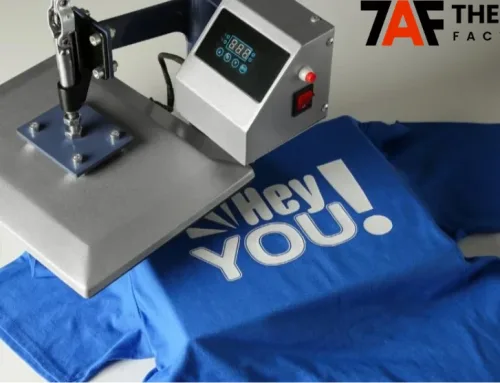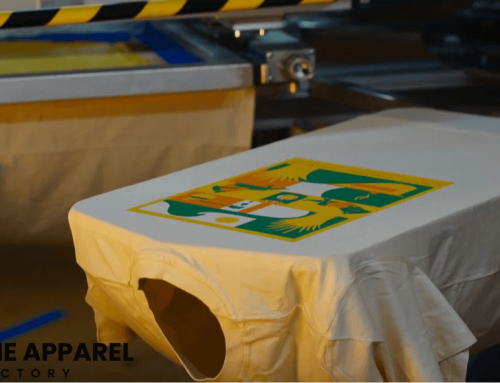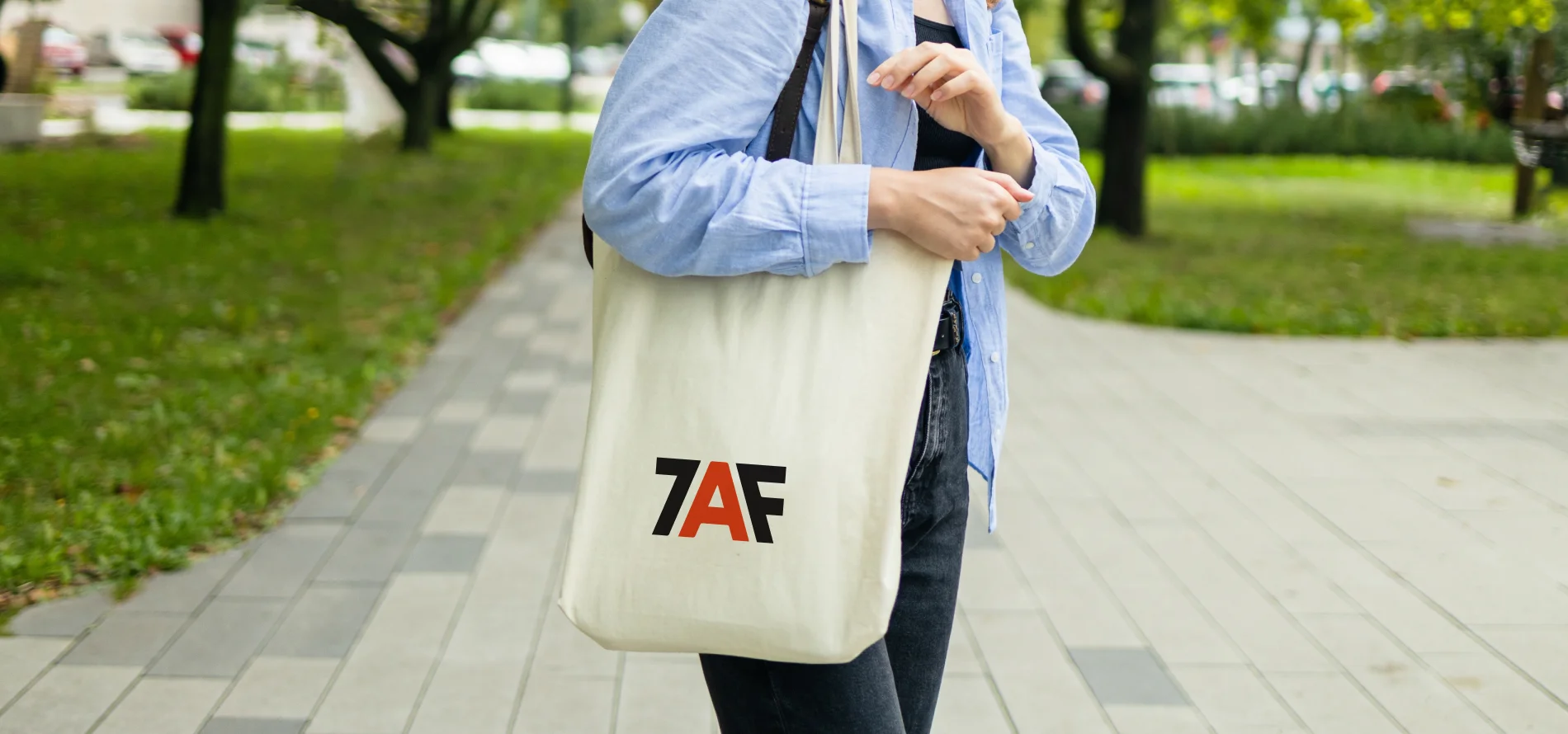
Tote bags have a rich history dating back to the 17th century. Initially used for carrying ice and other heavy items, they became a household staple. The word “tote” means to carry, and these bags were designed to be sturdy and practical. Over the years, tote bags evolved in style and material, becoming both a fashion statement and an eco-friendly alternative to plastic bags.
The concept of tote bags revolves around simplicity and functionality. They are typically large, open bags with parallel handles that emerge from the sides of the pouch. This design makes tote bags versatile and suitable for various purposes, from grocery shopping to carrying books and personal items.
Tote bags are made from various materials, each offering unique benefits. Common materials include cotton, canvas, jute, and recycled fabrics. Cotton and canvas tote bags are popular due to their durability and ease of customization.
Tote bags, especially those made from natural or recycled materials, have a positive environmental impact. They are reusable and can significantly reduce the need for single-use plastic bags.
By choosing blank tote bags or cutomize tote bag, you contribute to reducing plastic pollution and conserving natural resources. However, it is essential to use them multiple times to offset the environmental cost of production. Tote bags have gained immense popularity in recent years. Their practical design and growing awareness of environmental issues have made them a favorite among consumers.
Celebrities and influencers often showcase tote bags as trendy accessories, boosting appeal. Tote bags’ versatility makes them suitable for various occasions, from casual outings to professional looks.
Tote bags offer numerous benefits, making them valuable to anyone’s collection. They are spacious, durable, and versatile. Tote bags can be customized to reflect your style and make excellent gifts. Using custom tote bags also promotes environmental sustainability by reducing reliance on plastic bags.
Customizing a tote bag is a fun and creative way to make it uniquely yours. You can use fabric paint, patches, embroidery, or tie-dye techniques to personalize your tote bag. Adding your name, favorite quotes, or artwork can turn a plain tote bag into a stylish and personal accessory.
We will explore how to customize a tote bag, the concept of tote bags, the various materials used to make them, their environmental impact, and their growing popularity.
What is a Tote Bag?
A tote bag is a large, often unfastened bag with parallel handles that emerge from the sides of its pouch. It’s typically made from sturdy materials like canvas, cotton, or jute, making it durable and reusable.
Common Uses of Tote Bags
Tote bags are versatile and used for various purposes, such as:
- Shopping: Eco-friendly alternative to plastic bags.
- Everyday Carry: Ideal for books, groceries, or personal items.
- Promotional Items: Customizable for business branding.
- Beach Bag: Spacious and convenient for beach essentials.
- Gifting: Personalized totes make thoughtful gifts.
What Material is Used to Personalize Tote Bags?
Personalizing tote bags allows you to showcase your creativity and make each bag unique. Here are 8 materials you can use to transform a plain tote bag into a personalized canvas tote bag
- Plain Canvas Tote Bag: The perfect blank slate, offering durability and versatility for various customization techniques.
- Acrylic or Fabric Paint: Acrylic paint is ideal for creating colorful, bold designs. It is long-lasting and vibrant, while fabric paint ensures the design remains soft and flexible.
- Paintbrushes: In various sizes and shapes, paintbrushes allow for detailed work and broader strokes, making them essential for painting intricate designs or covering larger areas.
- Stencils or Stamps: are great for achieving consistent patterns and shapes. Stencils help create precise, repeatable designs, while stamps can add a fun and quick decorative touch.
- Iron-on Transfers or Patches: These are perfect for adding pre-made designs, logos, or patches. They are easily applied with an iron and can give your tote bag a polished, professional look.
- Embroidery Thread and Needle: Add texture and dimension to your tote bag with embroidery. Use various stitches and colorful threads to create personalized, hand-crafted designs.
- Fabric Markers or Pens are fantastic for drawing directly onto the fabric, allowing for detailed illustrations and lettering. They come in a wide range of colors and are designed to withstand washing.
- Fabric Glue: is essential for attaching embellishments like rhinestones, sequins, or fabric appliqués. It provides a strong bond without the need for sewing.
Why Customize a Tote Bag?
Personalize a tote bag offers numerous advantages for both personal and business purposes. It allows for unique personal expression and effective brand promotion and makes for personalized gifts on special occasions.
Creating a custom tote bag enables individuals to showcase their personality and creativity. Whether through unique designs, favorite quotes, or artistic patterns, customized tote bags reflect individual tastes and preferences.
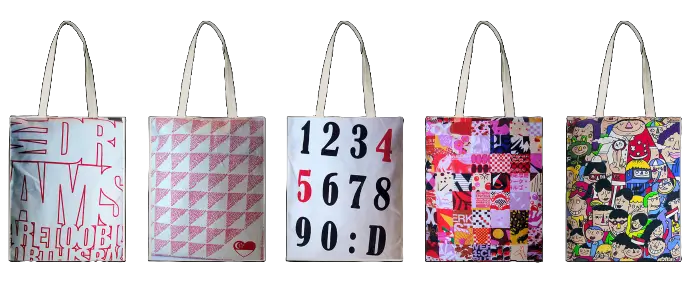
For businesses, customized tote bags serve as a powerful marketing tool. By adding logos, slogans, or brand colors, companies can enhance their visibility and create a lasting impression on customers. These bags act as mobile advertisements, spreading brand awareness wherever they go.
Customized tote bags make excellent personalized gifts for birthdays, weddings, holidays, mother’sday gift or corporate events. Adding a personal touch, such as a name or a special message, makes the gift more meaningful and memorable. Whether for friends, family, or clients, personalized tote bags are thoughtful and practical gifts that recipients will cherish and use frequently.
3 Different Methods to Customize a Tote Bag
- Screen Printing
- Heat Transfer
- Embroidery
1. Screen Printing

Screen printing involves creating a stencil (or screen) and applying layers of ink on the tote bag. Each color requires a different screen, and the ink is pushed through the screen onto the fabric.
This method is cost-effective for bulk orders, provides vibrant and long-lasting colors, and is ideal for simple designs with limited colors.
Here are some of the best cutomize tote bags
2. Heat Transfer

Heat Transfer design is printed on a special transfer paper using a printer. The paper is then placed on the tote bag, and heat is applied using a heat press machine to transfer the design onto the fabric.
Suitable for complex and colorful designs, allows for quick customization, and is excellent for small to medium-sized orders.
Here are some of the best personalized tote bags
- Q-Tees Q1100 14L Tote With Contrast-Color Handles
- Q-Tees Q611 25L Zippered Tote
- Q-Tees QTBG 12L Economical Tote
3. Embroidery
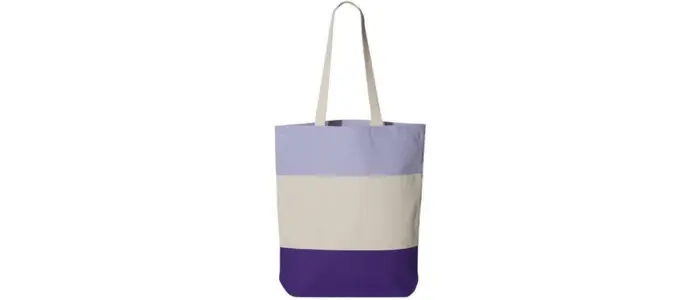
Embroidery involves stitching the design directly onto the tote bag using embroidery threads, which can be done by hand or with an embroidery machine.
It offers a professional, high-quality look, perfect for adding logos or intricate patterns, and provides a durable, textured finish that stands out.
Here are some of the top embroidered tote bags
3 Unique Step-by-Step Guide to Screen Printing a Tote Bag
Customizing a tote bag with screen printing involves several key steps. Here’s a detailed guide to help you create your unique designs.
- Preparing Your Design
- Setting Up the Screen
- Printing the Tote Bag
1. Preparing Your Design
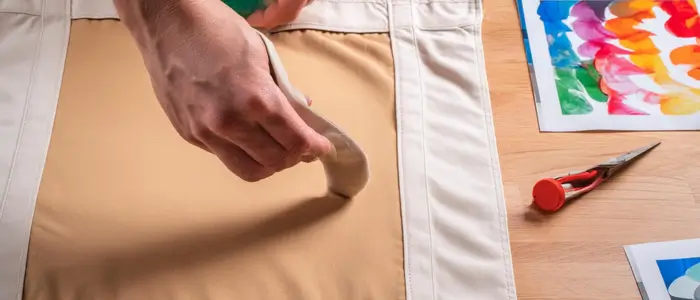
Start by selecting a design that suits your tote bag’s purpose. Use graphic design software to create or edit your design. Ensure the design is simple enough for screen printing, considering the number of colors and details.
2. Setting Up the Screen
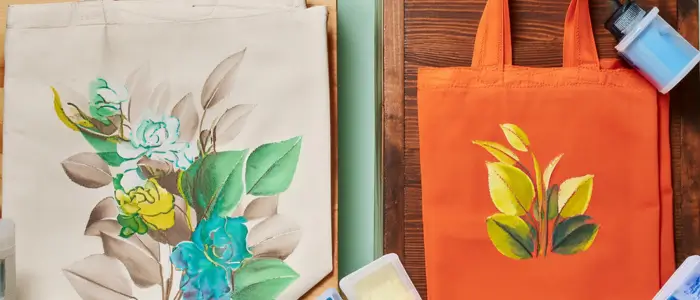
Gather your materials, including a screen, emulsion, squeegee, and ink. Coat the screen with photo emulsion and let it dry in a dark room. Place your design on the screen and expose it to light to transfer the design onto the emulsion. Rinse the screen with water to reveal your stencil.
3. Printing the Tote Bag
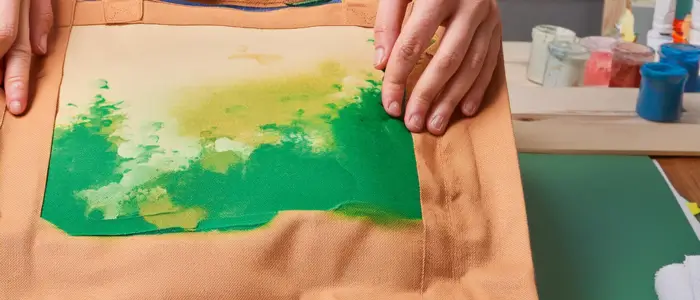
Lay the tote bag flat and position the screen on top. Pour ink onto the screen and use the squeegee to spread it evenly over the design. Lift the screen carefully to reveal your printed design. Allow the ink to dry completely before using the tote bag. Consider curing the ink with a heat press or dryer for added durability.
How to Heat Transfer a Design onto a Tote Bag? (3 Simple Steps)
Customizing a tote bag with heat transfer is a straightforward process that yields vibrant and professional results. Here’s how to do it:
- Choosing Your Design
- Printing the Transfer
- Applying the Transfer
1. Choosing Your Design
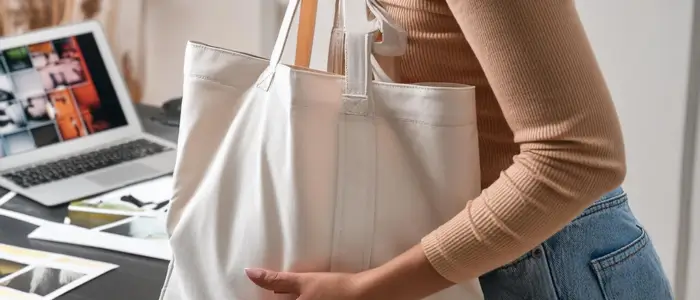
Design Selection, Software Tools:
- Begin by selecting a design that complements the tote bag’s purpose.
- Use design software like Adobe Illustrator, CorelDRAW, or free tools like Canva to create or customize your design.
- Ensure the design fits the size and shape of the tote bag and is optimized for heat transfer.
2. Printing the Transfer
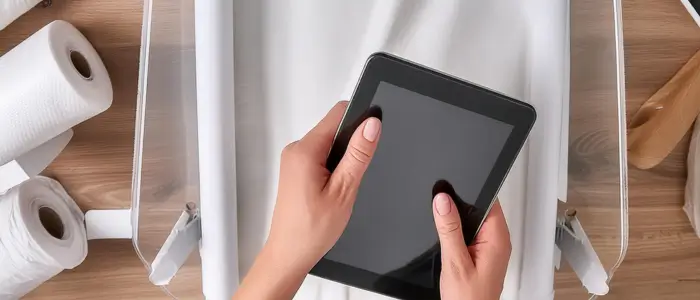
Types of Paper, Printing Techniques: Choose the appropriate transfer paper based on your printer type (inkjet or laser). Print the design onto the transfer paper, ensuring the image is mirrored if necessary. High-quality printing ensures the best transfer results, so use the highest resolution settings on your printer.
3. Applying the Transfer
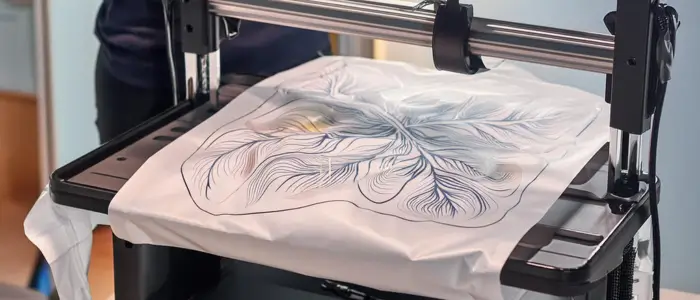
Heat Press Machine, Application Tips:
- Preheat the heat press machine according to the transfer paper’s instructions.
- Place the tote bag on the heat press, position the printed transfer paper on the bag, and cover it with a Teflon sheet.
- Apply heat and pressure per the instructions, usually 15-30 seconds.
- Carefully peel off the transfer paper while hot or cold, depending on the paper type.
- Allow the design to cool and set before using the tote bag.
Embroidery Techniques for Tote Bags (1st Step to Final Step Custom any tote bag)
Embroidery offers a high-quality, durable, and professional look for customizing tote bags. Follow these steps to achieve beautiful embroidered designs.
- Preparing Your Tote Bag
- Embroidering the Design
- Finishing Touches
1. Preparing Your Tote Bag
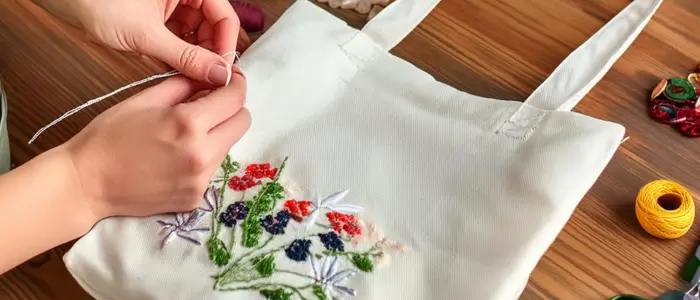
Setting Up the Fabric, Stabilizers:
- Begin by selecting the right tote bag and fabric suitable for embroidery.
- Secure the area to be embroidered with an embroidery hoop.
- Use a stabilizer on the inside of the tote bag to prevent the fabric from puckering and to ensure clean, crisp stitching.
2. Embroidering the Design
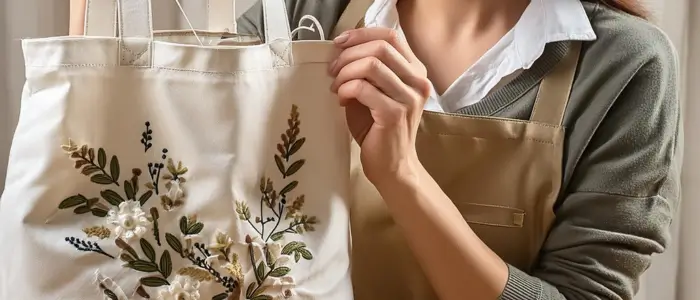
Stitching Techniques, Machine vs. Hand:
- Choose machine embroidery, which offers speed and precision, or hand embroidery for a more personalized touch. If using a machine, digitize your design and load it into the embroidery machine.
- Follow the machine’s instructions for stitching.
- Select the appropriate stitches (e.g., satin stitch, backstitch) and follow your design outline carefully for hand embroidery.
3. Finishing Touches
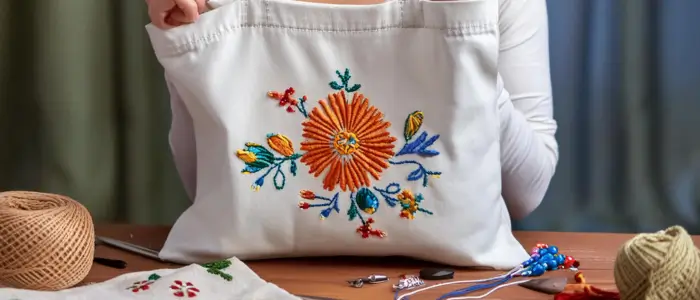
Securing Threads, Final Checks:
- Once the embroidery is complete, secure the threads by knotting and trimming any excess.
- Check for loose threads or gaps in the design and make necessary corrections.
- Remove the stabilizer, if applicable, and gently iron the embroidered area to ensure a smooth finish.
Your custom-embroidered tote bag is now ready to use!
3 Hand Painting Personalization Tips for Tote Bag
Hand painting a tote bag allows for ultimate creative freedom and personalization. Here’s a guide to help you create a unique, hand-painted tote bag.
- Sketching the Design
- Painting Techniques
- Sealing the Paint
1. Sketching the Design
Preparing the Tote, Outlining the Design: Start by washing and ironing the tote bag to remove wrinkles. Use a pencil or fabric chalk to sketch your design on the tote lightly. This outline will guide your painting and ensure your design is well-placed and proportionate.
2. Painting Techniques
Brush Types, Paint Application: Choose the right brushes for your design: smaller brushes for fine details and larger ones for filling areas. Use fabric paints for the best results, applying thin layers to prevent cracking. Start with lighter colors and gradually add darker shades for depth and dimension.
3. Sealing the Paint
Ensuring Longevity, Protecting the Design:
- Once the paint is completely dry, seal the design with a fabric sealant or fixative spray to protect it from washing and wear.
- Follow the sealant’s instructions for the best results.
- Allow the tote bag to dry thoroughly before use to ensure the paint is fully set and protected.
3 Tips for Choosing the Right Customization Method
When deciding how to customize a tote bag, consider several factors to choose the most suitable method.
- Budget Considerations
- Design Complexity
- Durability and Maintenance
1. Budget Considerations
Evaluate the cost of materials and tools required for each method. Screen printing is cost-effective for bulk orders, while hand painting might be more economical for small, unique batches. Heat transfer and embroidery may involve higher initial costs for equipment but offer high-quality results.
2. Design Complexity
Screen printing works best for simple designs with fewer colors, while heat transfer is ideal for complex, colorful designs. Embroidery suits intricate patterns and logos, providing a textured, professional look. Hand painting allows for the most creativity and detailed customization.
2. Durability and Maintenance
Consider how durable you need the design and what care is required. Screen printing and embroidery offer excellent durability, especially for items that will be washed frequently. Heat transfer designs also last long but may require special care. Hand-painted designs can be durable if appropriately sealed but might need more delicate handling.
Best Efficient Methods for Customizing Tote Bags in Bulk
Planning Your Design (Uniformity in Bulk Customization)
When planning the design for customizing tote bags in bulk, it’s crucial to maintain uniformity across all products. This ensures that every bag aligns with your brand’s identity and meets the expected quality standards. Start by creating a comprehensive design plan that includes your logo, brand colors, and any specific graphics or text you want to feature. Uniformity helps in brand recognition and makes the production process smoother and more efficient.
Bulk Design Tools and Software
Utilizing specialized bulk design tools can significantly streamline the process. These tools allow you to replicate your design effortlessly across multiple items. Programs like Adobe Illustrator, Canva, or specialized bulk design software can help you create a consistent look across all tote bags. These tools often come with templates and features that cater to bulk customization needs, ensuring each bag is identical in design.
How to Choose the Right Printing Service?
- Evaluating Providers
- Quality Checks and Assurance
- Cost-Effective Bulk Customization
- Bulk Discounts and Negotiations
1. Evaluating Providers
Selecting an exemplary printing service is crucial for high-quality bulk customization. Start by researching potential providers and evaluating their portfolios. Look for companies with experience in bulk printing and those with positive reviews and testimonials. It’s also beneficial to request samples of their work to assess the quality of their printing techniques and materials.
2. Quality Checks and Assurance
Once you have shortlisted potential providers, conducting quality checks is essential. Discuss your quality expectations and ensure they have robust quality assurance processes. This might include inspecting the durability of prints, the vibrancy of colors, and the overall finish of the tote bags. Consistent quality checks throughout the production process can prevent costly errors and ensure that the final product meets your standards.
3. Cost-Effective Bulk Customization
One significant advantage of customizing tote bags in bulk is the potential cost savings due to economies of scale. When you order in large quantities, the cost per unit typically decreases. This is because fixed production costs, such as setup fees and labor, are spread over more units. Plan your orders strategically to maximize these savings without compromising on quality.
4. Bulk Discounts and Negotiations
Many printing services offer bulk discounts, which can significantly reduce your overall costs. Feel free to negotiate with providers to secure the best possible rates. It’s also worth exploring different suppliers to compare their bulk pricing. Building a long-term relationship with a reliable provider can sometimes lead to additional discounts and better terms.
Why Choose The Apparel Factory for Tote Bag Customization?
Company-Specific Advantages
The Apparel Factory stands out in the customization industry due to its unique blend of experience, quality, and customer-centric services. With years of experience, the company has honed its craft in producing high-quality, customized tote bags that cater to various needs and preferences.
The Apparel Factory prioritizes customer satisfaction, ensuring every client receives a product that meets their specifications. Their team of skilled professionals is dedicated to delivering products on time without compromising quality. Furthermore, the company uses state-of-the-art technology to ensure precision and consistency in every customized order.
Wholesale Prices and Customization Services
One of the significant advantages of choosing The Apparel Factory is their competitive wholesale pricing. This pricing structure is ideal for businesses, organizations, and events that require bulk orders. The Apparel Factory’s wholesale prices maintain the quality of the tote bags, ensuring that every customer receives exceptional value for their money.
In addition to affordable pricing, The Apparel Factory offers extensive customization services. Customers can choose from various customization options, including screen printing, embroidery, heat transfer, and more. This variety allows clients to create unique designs that perfectly represent their brand or event. The company’s user-friendly online design tools simplify the customization process, enabling customers to visualize their designs before placing an order.
Various Materials and Design Tools
The Apparel Factory provides a broad selection of materials for tote bags, catering to different tastes and requirements. Whether you prefer canvas, cotton, jute, or recycled materials, the Apparel Factory has everything. Each material is carefully selected to ensure durability, functionality, and aesthetic appeal.
Their design tools are among the best in the industry, allowing clients to create intricate and detailed designs easily. These tools include various fonts, colors, and graphics, ensuring that every tote bag reflects the client’s vision. Additionally, The Apparel Factory provides expert guidance throughout the design process, helping clients make the best choices for their customized tote bags.
How to Customize a Tote Bag at Home – FAQs
What materials do I need to customize a tote bag at home?
You’ll need a plain tote bag, fabric paint or markers, stencils or templates, paintbrushes, and optional embellishments like patches, beads, or buttons.
What are some easy methods for customizing a tote bag?
You can paint designs using stencils, apply iron-on transfers, embroider patterns, or attach decorative patches. Each method offers a unique look and can be combined for a more personalized touch.
How do I prepare the tote bag for customization?
Ensure the tote bag is clean and free of wrinkles. Lay it flat on a protected surface, and place a piece of cardboard inside to prevent paint or ink from bleeding.
What steps should I follow to paint a design on my tote bag?
Start by sketching your design on paper. Transfer the design onto the bag using a light pencil outline. Apply fabric paint using a brush or stencil, allowing each layer to dry before adding more details.
How can I ensure my design lasts on the tote bag?
Follow the paint or ink manufacturer’s instructions for setting the design. It often involves ironing the bag with a cloth over the design to heat-set the paint, making it more durable.
Conclusion
Customizing a tote bag at home is a delightful and creative way to showcase your unique style. With various materials and techniques at your disposal, the possibilities for personalization are endless. Whether you opt for painting, embroidery, or adding decorative elements, each process step allows you to infuse your personality into the design. By carefully following the steps and ensuring your design is set correctly, you’ll understand how to customize a tote bag that stands out from the crowd and reflects your flair. Enjoy the satisfaction of carrying a tote bag that is truly one-of-a-kind and a testament to your creativity.
Published on:
July 28, 2024




